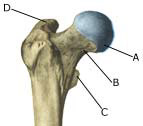|
||
|
||
| Cause: For unknown reasons, a slipping of the femoral head in the growth zone can occur in some cases. The condition is mainly seen in boys in the 11-16 years age group (article).
Symptoms: There will only be slight pain initially, with tiredness in the hip joint upon movement and being subjected to load, as well as limping and constriction of movement of the joint. Constriction of movement when rotating the hip joint will often be seen. Increased pain will be felt later on, with more pronounced limping. The pain can occasionally be felt in the knee instead of the hip. Examination: It is important to undergo a medical examination as soon as possible so that the diagnosis can be made, as this is vital to achieve a good result from the treatment. It will often be necessary to supplement the examination with an x-ray (X-ray) (inclusive of Lauensteins projection), MRI scan or an ultrasound scan (article). Treatment: Treatment should be commenced as soon as ever possible, and comprises surgery where the articular head is put back into place and fixed if necessary, as well as relief (article). Rehabilitation of children and adolescents: The type of rehabilitation and load which can be permitted is completely dependant upon the severity of the condition. The rehabilitation should therefore be performed in close cooperation with the doctors controlling the treatment. Complications: The condition can cause the risk of a lasting injury to the articular head (caput necrose) (article), and degenerative arthritis in the hip joint, as well as shortening of the leg and reduced mobility of the hip joint. |

